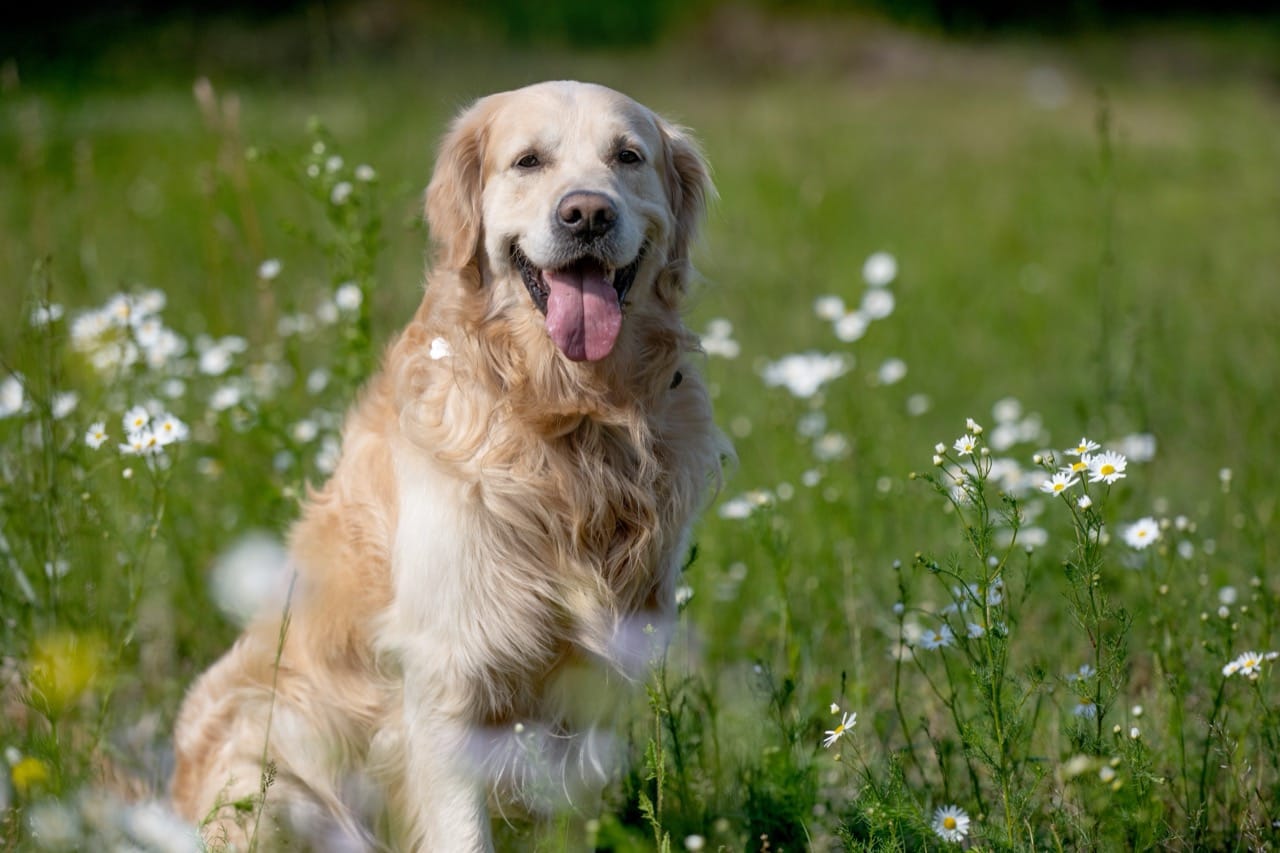Golden Retrievers are among the most beloved and recognizable dog breeds worldwide, revered for their friendly disposition and unwavering loyalty. This breed not only excels in companionship but also demonstrates remarkable versatility by thriving in roles ranging from assistance animals to search-and-rescue dogs. This article delves into the qualities and characteristics that make Golden Retrievers a favorite among dog enthusiasts and an invaluable asset in various service roles.
Characteristics / Physical Description
Golden Retrievers are large, muscular dogs with a dense, water-repellent wavy coat, which comes primarily in various shades of gold. They typically weigh between 55 to 75 pounds and stand about 20 to 24 inches tall at the shoulder. Their broad heads, friendly and intelligent eyes, and short ears give them an approachable and alert expression. The breed is also known for its smooth, powerful gait and the characteristic feathery tail that enthusiastically wags, reflecting their generally happy temperament.
Taxonomy and Classification
The Golden Retriever falls under the Canidae family, which encompasses domestic dogs, wolves, foxes, and other extant and extinct like species. This breed is classified within the genus Canis, which includes dogs, wolves, and some of the most familiar and socially complex canid species.
Behavior and Social Structure
Golden Retrievers are famous for their docile and friendly nature. They are highly social and thrive in human company, demonstrating a patient demeanor that makes them excellent pets for families with children. Their intelligence and eagerness to please facilitate ease of training. Golden Retrievers are also known for their sociability with other dogs and pets, making them ideal candidates for communal living and social activities.
Habitat and Distribution
Originally bred in Scotland in the mid-19th century for retrieving game in hunting, Golden Retrievers are now found in homes worldwide, especially popular in the United States, Canada, and Europe. They adapt well to a variety of living conditions and are as comfortable in apartments as they are in houses with large yards, provided they receive sufficient exercise.
Diet and Feeding Habits
As with most dog breeds, Golden Retrievers require a well-balanced diet rich in quality protein and carbohydrates. Their diet should also include fats for energy and a shiny coat, along with essential vitamins and minerals to support overall health. Portion control is crucial as they are prone to obesity, especially with their hearty appetite.
Breeding and Reproduction
Golden Retrievers reach reproductive maturity around one year of age, though responsible breeders prefer to wait until they are two to three years old. A typical litter consists of eight to twelve puppies. Due to their popularity, careful attention to genetic screening and health testing is important to maintain the breed’s health and prevent hereditary conditions.
Relationship with Humans
Golden Retrievers have a storied history of interaction with humans. They are not only cherished pets but also excel in roles such as guide dogs for the blind, hearing dogs for the deaf, hunting dogs, and in search-and-rescue missions. Their gentle and attentive nature makes them excellent therapy dogs, providing comfort to those in hospitals and nursing homes.
Evolutionary History
The breed was developed from the now-extinct Tweed Water Spaniel, the Newfoundland, and other small retriever breeds with the goal of creating a perfect hunting dog capable of retrieving from both water and land. The Golden Retriever was first exhibited in a British dog show in 1908, and since then, it has rapidly grown in popularity across the globe.
Golden Retrievers continue to win the hearts of many through their remarkable intelligence, adaptability, and friendly demeanor, making them not just pets but true members of the family.

